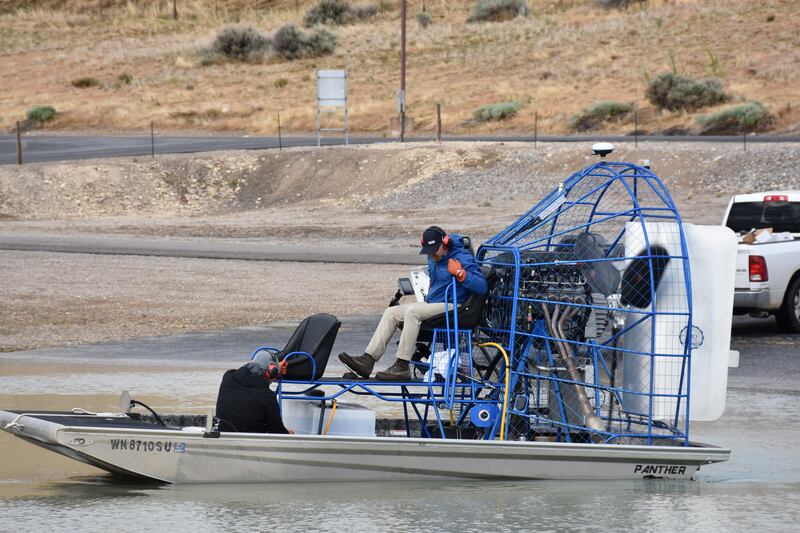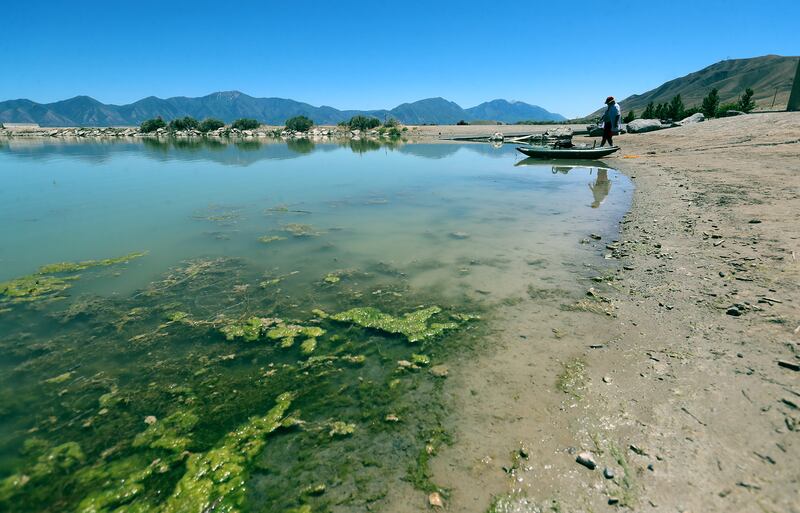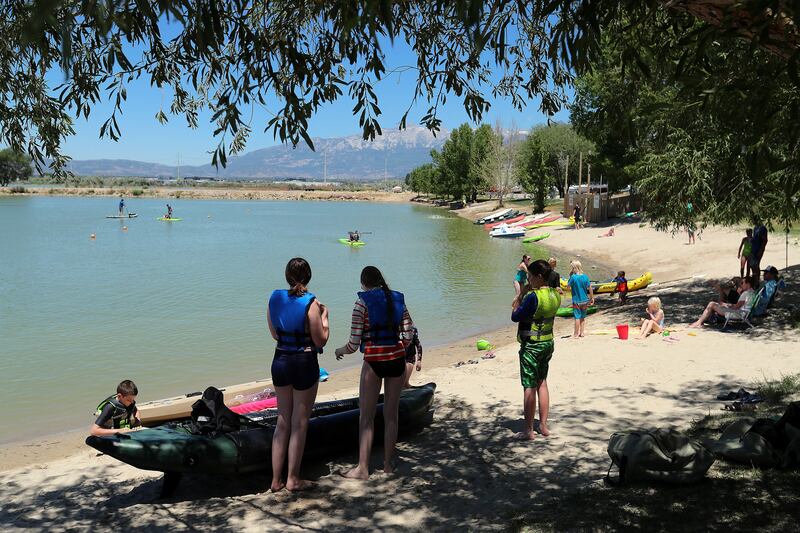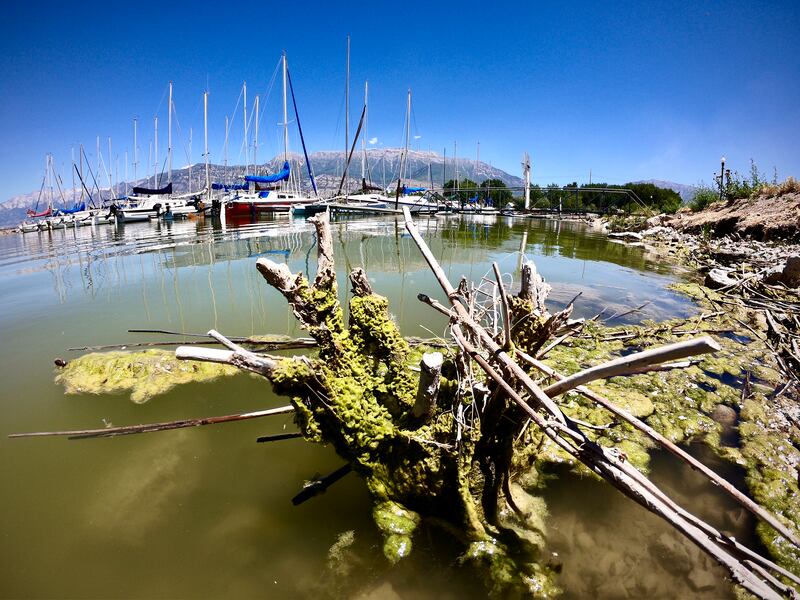SPANISH FORK — Officials are pilot testing two different treatments at Utah Lake in an effort to beat back algal blooms that have hampered recreation throughout the past couple of summers.
The cyanobacteria, or blue-green algae, contain toxins that can cause damage to the liver or nerves. September 2019 saw a rise of algal blooms that led the public health department to issue a warning urging people to avoid contact with Utah Lake’s water. The warning remained in effect throughout the month.
In addition to being a public health hazard, algal blooms can be harmful to aquatic life. Typically environmental leaders monitor blooms to see if bacteria levels reach a certain threshold, and if they do, they issue warnings or closures to certain areas — sometimes even a body of water as a whole. However, health and water quality officials are not currently able to monitor or provide updates on Utah waterbodies until at least July 1 due to state budget uncertainty caused by COVID-19.
Utah Lake is the third-largest freshwater lake in the U.S. west of the Mississippi. It’s a hot spot for recreation along the Wasatch Front during the summer, but public use is sometimes severely impacted by algal blooms.

“Anytime folks hear there is an algal bloom that has the potential to have an impact on health, we see visitation drop off almost entirely,” said Eric Ellis, Utah Lake Commission executive director. “What’s interesting is that most people are very aware of blooms and occasional blooms or potential for blooms on Utah Lake, but many don’t realize this is a statewide, nationwide issue.”
He said he hopes the pilot studies will come up with temporary fixes to respond to the issue while officials work to determine a long-term solution to address the problem of algal blooms itself.
“We really just wanted to know what treatments and innovative technologies were available for treating algae on the lake,” Ellis said. “We are approaching the long-term solution of this through the Utah Lake Water Quality study but we recognize that in the interim, there is a large demand to reduce the frequency or the scope of the blooms on the lake year in and year out as the recreation season begins.”
Pilot testing was deployed in Lincoln Beach — the southeastern portion of the lake — last week to great results. Just four hours after treatment the water was the clearest its been in a long time, Ellis said.
Officials recently launched an airboat to distribute the treatment in Lincoln Beach across the marina’s surface. The chemicals, according to Ellis, are self-dispersing, but to speed up the process officials dropped it throughout the marina rather than one central location.
The second treatment will take place in the near future at the northeastern part of the lake, Lindon Marina. Deployment will be similar, though the treatment differs slightly.
Ellis said treatments will span the rest of the summer and will be deployed on an ongoing basis in conjunction with the presence of algae for a threshold based treatment regime.
Ellis said treatments will have no impact on public access. Lincoln Beach and Lindon Marina remain open — locations that were selected for the pilot program because they are common hot spots for algae blooms and are moderate enough in size to make testing manageable.

Utah Lake is enormous, so doing a blanket treatment on the entirety of the lake would not be efficient, Ellis pointed out.
“Rather they would design a system that was able to track where blooms were starting and kind of treat them at their source rather than a broader scale,” he said about possible future efforts.
Ellis said the public should be aware of signs posted at Utah Lake’s access points instructing visitors about the harmful algal blooms.
“There’s the occasion for isolated blooms that will take place miles from where you intend to recreate,” he said. “As long as you keep your eyes peeled, you can avoid by and large any of the blooms on the lake. They are usually taking place at a quiet, stagnant corner of the lake that boaters normally don’t ever reach.”
The treatments are being funded through a 2019 appropriation from the Utah Legislature issued to fund research and combat the ongoing algal bloom problem.
“Utah Lake is open. This is a perfect time of the year for people to go out and try the lake out. It’s full — it’s an uncommon thing for Utah Lake to be at its full stage,” Ellis said. “The water is nice, it’s perfect for recreating right now.”



